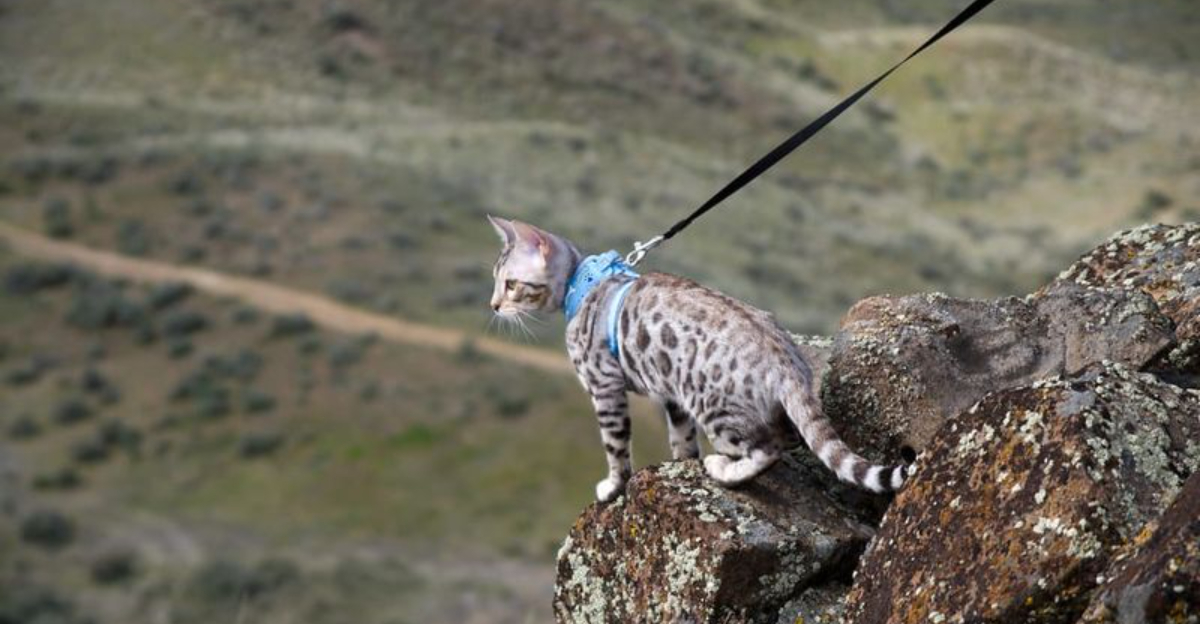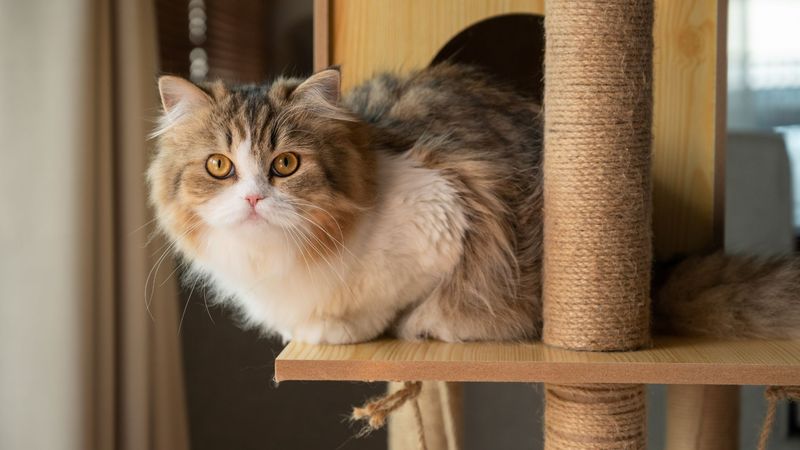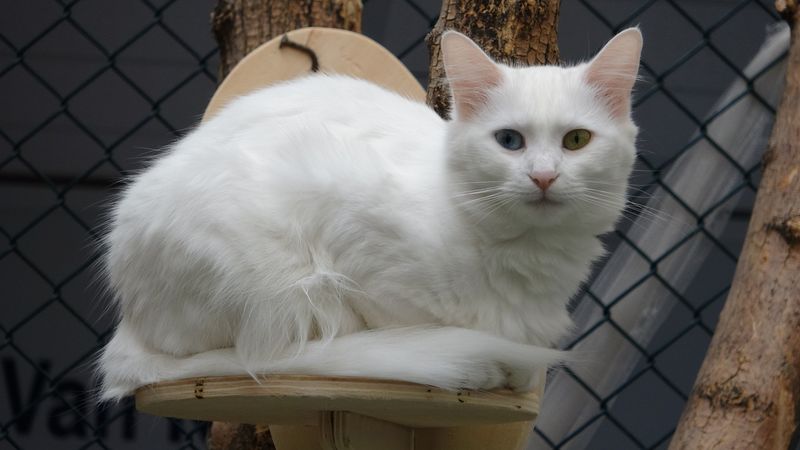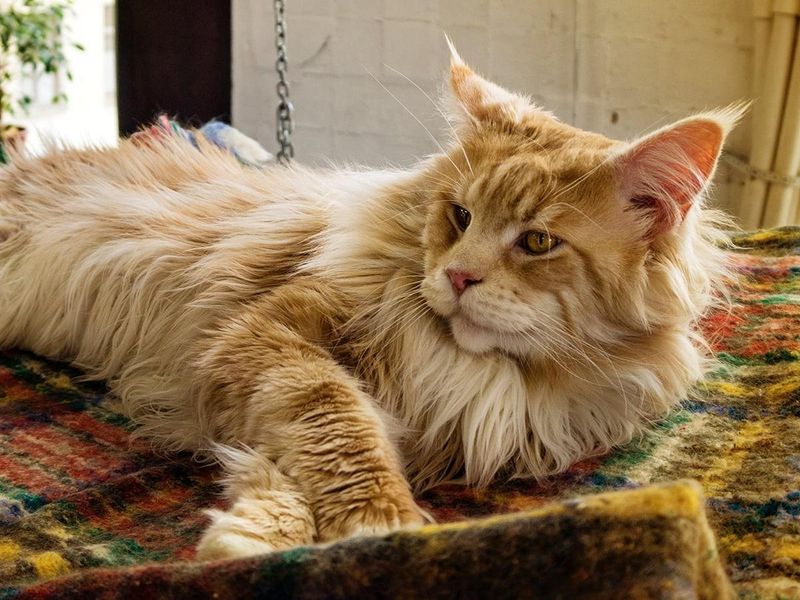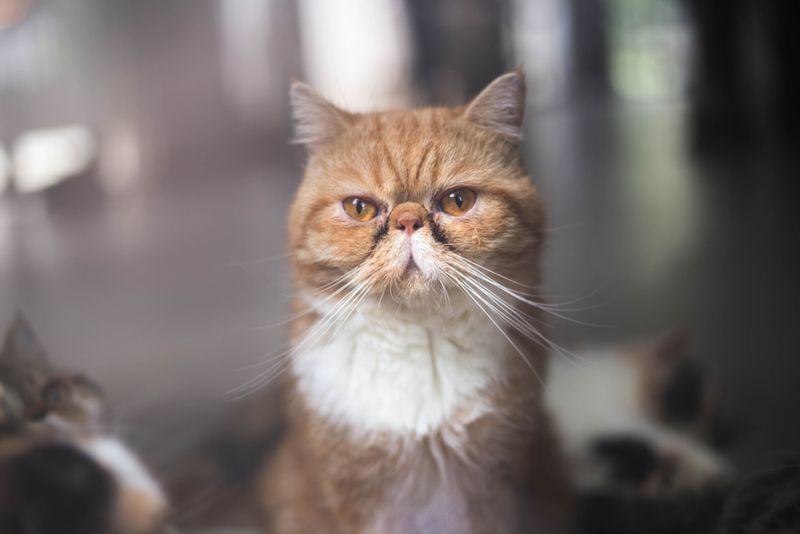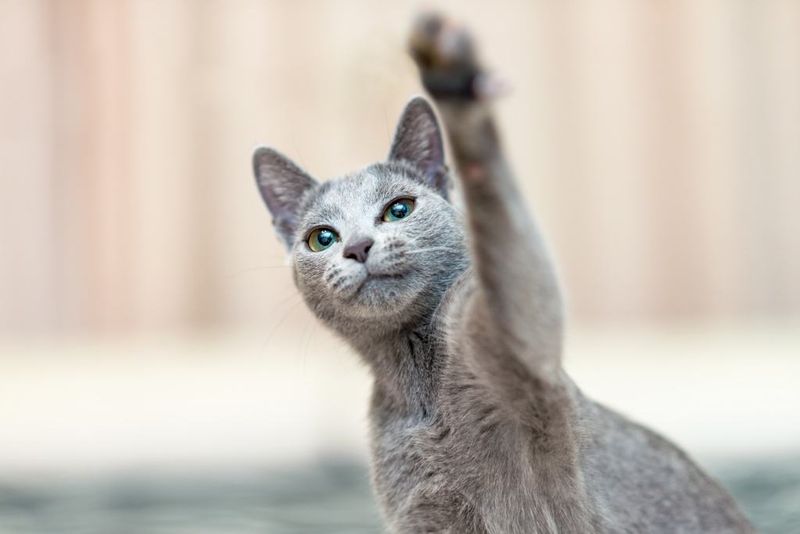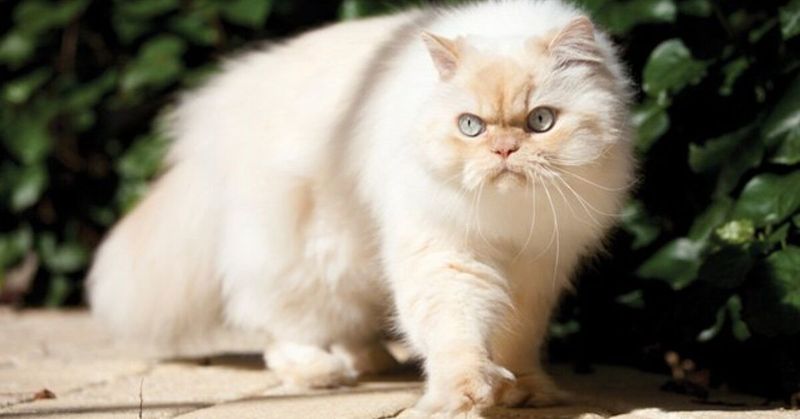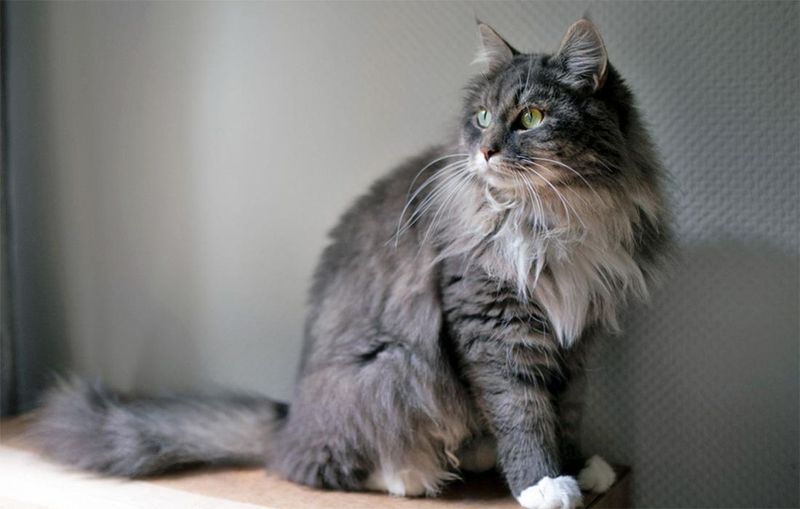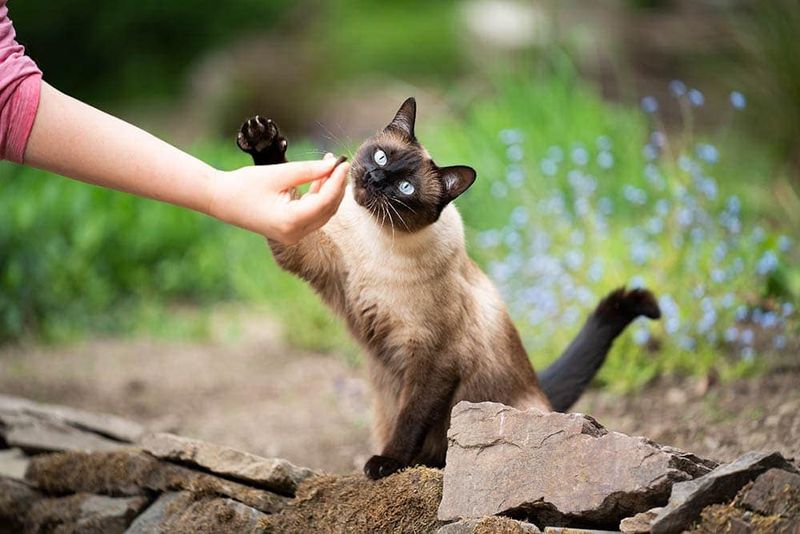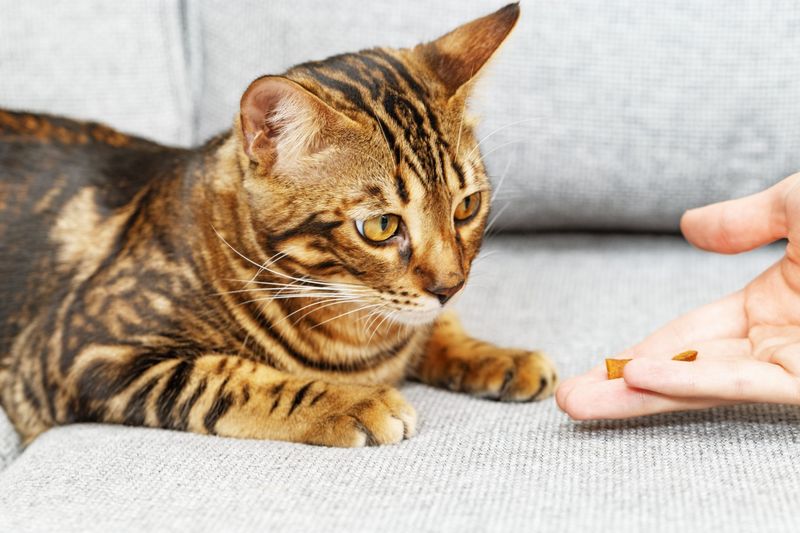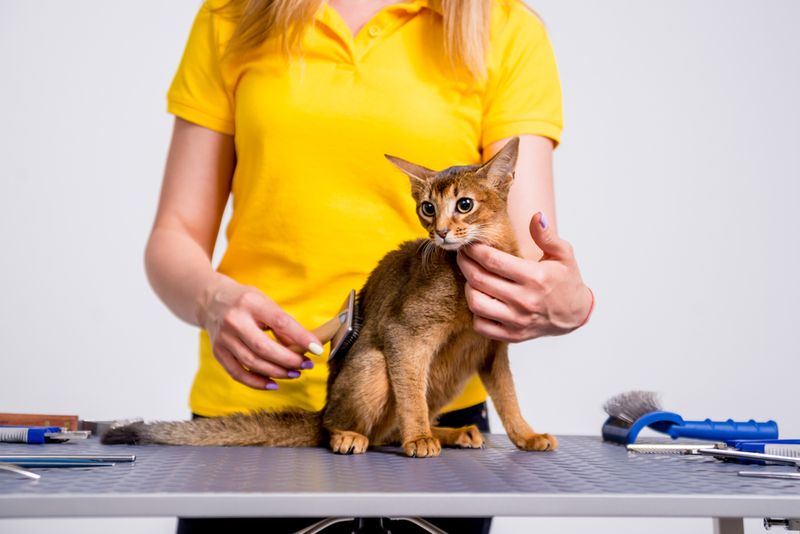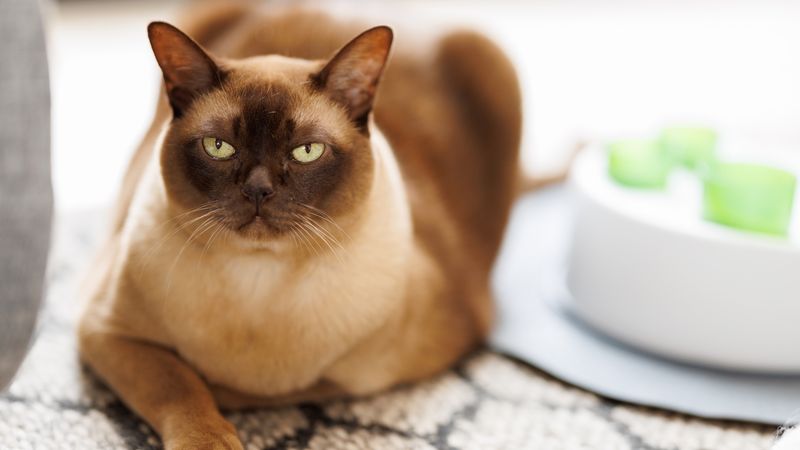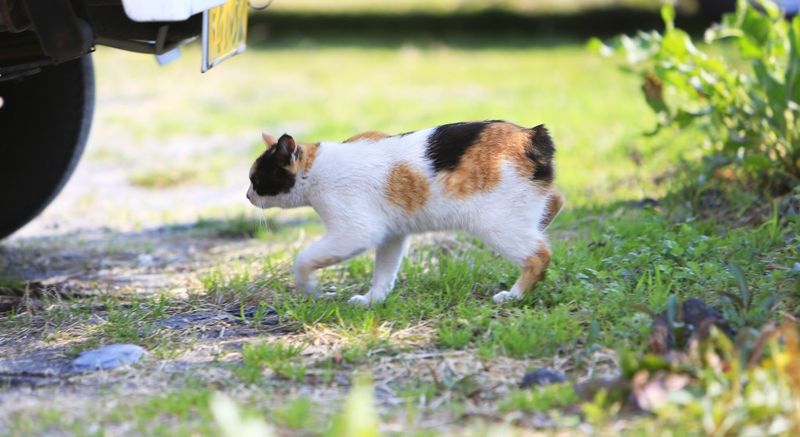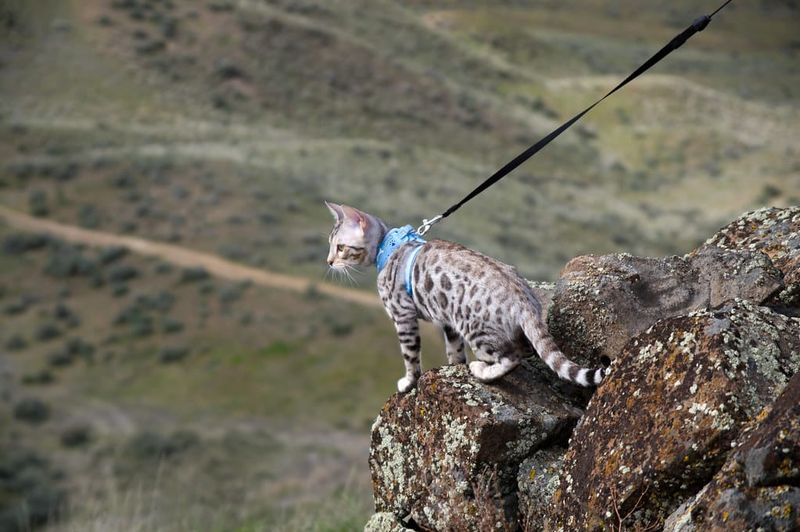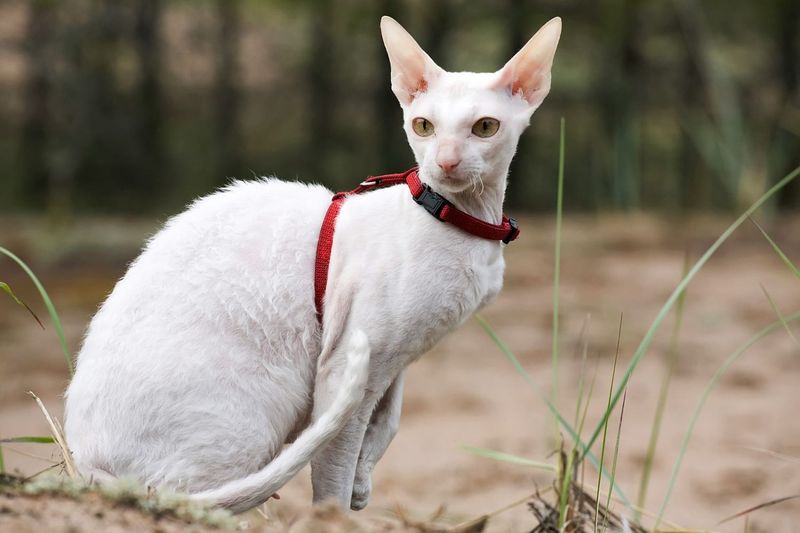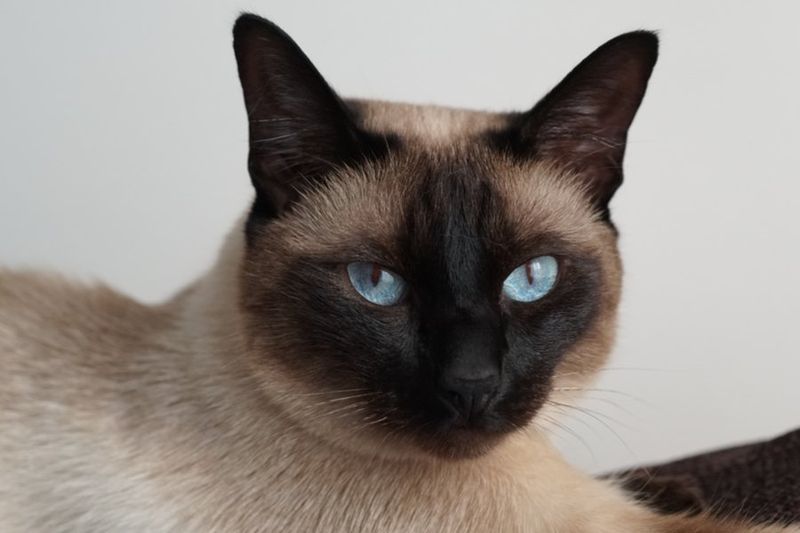📖 Table of Content:
Cat owners know that feline friends march to the beat of their own drum. Some cats seem to completely ignore commands, while others surprise us with their ability to learn tricks and behaviors. Understanding which breeds tend to be more receptive to training can help you choose the right cat for your lifestyle. Let’s explore which cats typically resist training efforts and which ones might actually listen when you call their name!
1. Persian
Persian cats are notoriously difficult to train due to their laid-back, stubborn temperament. These fluffy felines prefer lounging on cushions to learning commands or tricks. Their relaxed attitude means they often ignore instructions completely.
Persians aren’t motivated by treats or praise the way other breeds might be. They operate on their own schedule and agenda, making consistent training nearly impossible. Many owners report that their Persian cats simply walk away mid-training session.
Their independent nature combined with a generally low energy level creates the perfect storm for training resistance. While loving and affectionate, Persians firmly belong in the “untrainable” category of the cat world.
2. Turkish Van
With a bold spirit and love for water, Turkish Van cats aren’t ones to follow orders. Their fierce independence and boundless curiosity make them more likely to dive into mischief than obey commands.
Training sessions with a Turkish Van frequently turn into playtime on their terms. These cats decide when and how they want to interact, making structured learning challenging at best. Their intelligence actually works against training – they’re smart enough to know they don’t need to comply!
Most Turkish Van owners eventually surrender to the cat’s strong will and adapt their expectations instead of changing the cat’s behavior.
3. Scottish Fold
While their folded ears give Scottish Folds an endearing look, their attitude toward training is far less sweet. These cats have a mind of their own and rarely follow instructions, even when they clearly know what’s expected.
The typical Scottish Fold responds to training attempts with a blank stare followed by walking away or falling asleep. Their gentle nature doesn’t translate to obedience or willingness to please through performing tricks. Many owners report that their Scottish Folds seem almost amused by training attempts.
While affectionate and loving companions, these cats firmly believe they make the rules in your household, not you.
4. Maine Coon
Don’t let their cuddly appearance fool you—Maine Coons do things their way. Training them requires patience, since they rarely respond unless it’s something they already wanted to do.
Their intelligence works both for and against training efforts. Maine Coons understand what you’re asking but carefully weigh whether your request deserves their attention. Food motivation helps temporarily, but consistency remains elusive with these strong-willed felines.
Many Maine Coon owners report that their cats eventually train them instead of the other way around! While loving and social, these magnificent cats maintain their wild heritage through their resistance to human direction.
5. Exotic Shorthair
With their chubby cheeks and calm demeanor, Exotic Shorthairs seem like easy students—until training begins. Behind those wide eyes lies a willful streak that quietly resists every lesson.
Training sessions with Exotic Shorthairs typically end with the cat sleeping or wandering off mid-instruction. Their low energy level means they lack motivation for active participation in training. Even food rewards often fail to capture their sustained interest.
Owners report that Exotic Shorthairs sometimes seem to deliberately do the opposite of what’s requested, as if asserting their independence. Their cuddly appearance masks a fiercely autonomous spirit that resists human guidance.
6. Russian Blue
Russian Blues combine intelligence with independence in ways that frustrate training efforts. These silver-blue beauties understand commands perfectly but decide case-by-case whether they feel like responding. Their sensitive nature means they shut down training sessions if they feel pressured.
The reserved personality of Russian Blues works against consistent training progress. They need excessive patience and may abandon activities if they sense frustration from their owner. What worked yesterday might be completely ignored today without explanation.
Their highly selective attention means they engage only with activities they find inherently interesting. Owners often joke that Russian Blues train themselves on their own terms while ignoring human input entirely. Their sophisticated demeanor matches their sophisticated approach to ignoring your training efforts.
7. Himalayan
Combining Persian calm with Siamese sass, Himalayans are perfectly capable of learning tricks—they just don’t see the point. Their elegant gaze says it all: training is clearly for lesser beings.
Food motivation works sporadically with Himalayans, but they quickly lose interest even with high-value treats. Their moderate energy level means they conserve effort for activities they choose themselves. Many owners report their Himalayan will actively leave the room when training begins.
The breed’s strong-willed nature means they set boundaries about which behaviors they’ll tolerate correction for. While loving companions, Himalayans firmly believe humans exist to serve them, not the other way around.
8. Ragamuffin
These soft, unbothered cats might seem like ideal training candidates—but Ragamuffins are masters of passive rebellion. Commands are met with slow blinks and quiet noncompliance.
The breed’s intelligence means they quickly figure out which rules they can break without consequences. Training sessions with Ragamuffins often devolve into playtime or cuddle sessions on their terms. Their sweet expression masks a determined mind that refuses direction.
Most Ragamuffin owners eventually accept that their cat’s affectionate nature doesn’t translate to obedience. While they form strong bonds with their humans, these cats firmly believe in mutual respect – which means you respect their decision to ignore your training attempts!
1. Siamese
Siamese cats stand out as remarkably trainable felines. Their high intelligence combined with a desire to interact with their humans creates the perfect foundation for learning commands and tricks. These vocal cats actively seek engagement and mental stimulation.
Consistency works wonders with Siamese training. They quickly connect actions with rewards and remember lessons for years. Their natural curiosity means they enjoy the challenge of figuring out what you want them to do.
Many Siamese cats can learn an impressive repertoire of tricks including fetching, coming when called, and even walking on a leash. Their people-oriented nature means they genuinely want to please their owners, making positive reinforcement particularly effective with this bright, responsive breed.
2. Bengal
Don’t let their wild looks fool you—Bengals are impressively trainable. Their sharp intellect and boundless curiosity make them eager students, especially when given something fun and mentally demanding.
Training sessions double as essential exercise for these active cats. Their natural athleticism allows them to learn impressive physical feats like jumping through hoops or navigating obstacle courses. Bengals respond exceptionally well to clicker training methods.
The breed’s food motivation makes reward-based training particularly effective. Many Bengal owners successfully teach their cats to walk on leashes, fetch toys, and even turn light switches on and off. Their playful nature means they view training as an exciting game rather than a chore.
3. Abyssinian
Abyssinians rank among the most trainable cat breeds thanks to their extraordinary intelligence and playful nature. These active cats form strong bonds with their humans and genuinely enjoy interactive training sessions. Their alert expression reveals a mind constantly ready to learn.
The breed’s natural curiosity makes them eager participants in training activities. Abyssinians quickly grasp the connection between their actions and rewards, making positive reinforcement highly effective. Their athletic ability allows them to master physical tricks with impressive grace.
Many Abyssinian owners successfully teach their cats to fetch, give high-fives, and navigate complex puzzle toys. Their moderate food motivation combined with a desire for praise creates a cat that responds consistently to training efforts when sessions remain upbeat and engaging.
4. Burmese
With their glossy coats and loyal hearts, Burmese cats bring canine-level devotion to the world of felines. Their deep attachment to their people and lifelong playfulness make them natural learners.
Food motivation runs high in Burmese cats, making reward-based training particularly successful. They quickly learn to associate specific words with desired behaviors and respond consistently to commands. Many owners report their Burmese cats come running when called by name.
The breed’s sociable nature means they enjoy the interaction that comes with training sessions. Burmese cats can learn an impressive variety of tricks including fetching, sitting on command, and even simple agility courses. Their intelligence combined with their people-oriented personality creates highly responsive feline students.
5. Japanese Bobtail
With their bright eyes and boundless energy, Japanese Bobtails make excellent training partners. Their strong family bonds and inquisitive minds mean they’re always on the lookout for the next challenge.
The breed’s natural athleticism supports physical training like agility courses or fetch games. Japanese Bobtails respond enthusiastically to positive reinforcement methods, especially when training incorporates play elements. Their moderate food motivation combined with praise creates effective training incentives.
Many owners successfully teach their Japanese Bobtails to walk on leashes, perform tricks, and even use toilet facilities instead of litter boxes. Their adaptable nature means they quickly adjust to new routines and expectations when introduced with patience and consistency.
6. Savannah
Savannah cats combine wild appearance with surprisingly trainable temperaments. These tall, spotted felines possess remarkable intelligence that allows them to learn complex behaviors and commands. Their high energy level means they appreciate the mental stimulation that training provides.
Leash training works particularly well with Savannahs, allowing them safe outdoor exploration. Their strong bond with preferred humans creates motivation to participate in training activities. Savannahs respond best to consistent, patient training methods that respect their independent nature.
The breed’s natural curiosity makes puzzle toys and training games especially effective learning tools. Many Savannah owners successfully teach their cats to fetch, come when called, and perform impressive jumping tricks. Their dog-like loyalty combined with feline intelligence creates a uniquely trainable companion.
7. Cornish Rex
These curly-coated comedians love to learn. Cornish Rexes combine curiosity and agility, making them quick studies in anything from tricks to puzzle toys—even as they age.
The breed’s extraordinary agility allows them to master physical tricks that would challenge other cats. Cornish Rex cats form strong bonds with their families and genuinely enjoy the interaction that comes with training sessions. Their expressive faces clearly show their engagement in learning activities.
Many owners successfully teach their Cornish Rex cats to fetch small objects, jump through hoops, and respond reliably to verbal commands. Their natural curiosity combined with moderate food motivation creates a cat that remains interested in training throughout their lives.
8. Tonkinese
Blending the best of Siamese and Burmese, Tonkinese cats are quick learners with big hearts. Their medium-sized, athletic bodies house sharp minds that thrive on interaction and mental challenge.
The breed’s moderate energy level creates perfect balance for training sessions – engaged without becoming overstimulated. Tonkinese cats respond remarkably well to clicker training methods that provide clear communication. Their food motivation remains consistent, making reward-based training particularly effective.
Many Tonkinese owners successfully teach their cats to come when called, walk on leashes, and perform an impressive variety of tricks. Their social nature means they enjoy the interaction that comes with training, viewing it as quality time with their beloved humans.
